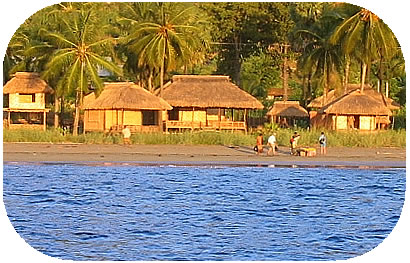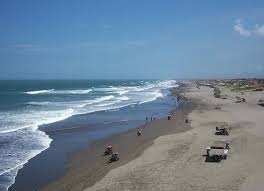
http://www.destination360.com/asia/china/great-wall-of-china
Great Wall of China
The Great Wall of China (simplified Chinese: 长城; traditional Chinese: 長城; pinyin: Chángchéng; literally "long city/fortress") or (simplified Chinese: 万里长城; traditional Chinese: 萬里長城; pinyin: Wànlǐ Chángchéng; literally "The long wall of 10,000 Li (里)"[1]) is a series of stone and earthen fortifications in northern China, built, rebuilt, and maintained between the 5th century BC and the 16th century to protect the northern borders of the Chinese Empire during various successive dynasties. Since the 5th century BC, several walls have been built that were referred to as the Great Wall. One of the most famous is the wall built between 220–206 BC by the first Emperor of China, Qin Shi Huang. Little of that wall remains; the majority of the existing wall were built during the Ming Dynasty.
The Great Wall stretches from Shanhaiguan in the east to Lop Nur in the west, along an arc that roughly delineates the southern edge of Inner Mongolia. The most comprehensive archaeological survey, using advanced technologies, has recently concluded that the entire Great Wall, with all of its branches, stretches for 8,851.8 km (5,500.3 mi). This is made up of 6,259.6 km (3,889.5 mi) of sections of actual wall, 359.7 km (223.5 mi) of trenches and 2,232.5 km (1,387.2 mi) of natural defensive barriers such as hills and rivers.
History
Great Wall of the Qin Dynasty
Great Wall of the Han Dynasty
Great Wall of the Ming Dynasty
Map of the whole wall constructions
The Chinese were already familiar with the techniques of wall-building by the time of the Spring and Autumn Period, which began around the 8th century BC. During the Warring States Period from the 5th century BC to 221 BC, the states of Qi, Yan and Zhao all constructed extensive fortifications to defend their own borders. Built to withstand the attack of small arms such as swords and spears, these walls were made mostly by stamping earth and gravel between board frames. Qin Shi Huang conquered all opposing states and unified China in 221 BC, establishing the Qin Dynasty. Intending to impose centralized rule and prevent the resurgence of feudal lords, he ordered the destruction of the wall sections that divided his empire along the former state borders. To protect the empire against intrusions by the Xiongnu people from the north, he ordered the building of a new wall to connect the remaining fortifications along the empire's new northern frontier. Transporting the large quantity of materials required for construction was difficult, so builders always tried to use local resources. Stones from the mountains were used over mountain ranges, while rammed earth was used for construction in the plains. There are no surviving historical records indicating the exact length and course of the Qin Dynasty walls. Most of the ancient walls have eroded away over the centuries, and very few sections remain today. Later, the Han, Sui, Northern and Jin dynasties all repaired, rebuilt, or expanded sections of the Great Wall at great cost to defend themselves against northern invaders.
The Great Wall concept was revived again during the Ming Dynasty following the Ming army's defeat by the Oirats in the Battle of Tumu in 1449. The Ming had failed to gain a clear upper-hand over the Manchurian and Mongolian tribes after successive battles, and the long-drawn conflict was taking a toll on the empire. The Ming adopted a new strategy to keep the nomadic tribes out by constructing walls along the northern border of China. Acknowledging the Mongol control established in the Ordos Desert, the wall followed the desert's southern edge instead of incorporating the bend of the Huang He.
Unlike the earlier Qin fortifications, the Ming construction was stronger and more elaborate due to the use of bricks and stone instead of rammed earth. As Mongol raids continued periodically over the years, the Ming devoted considerable resources to repair and reinforce the walls. Sections near the Ming capital of Beijing were especially strong.[citation needed]
During the 1440s–1460s, the Ming also built a so-called "Liaodong Wall". Similar in function to the Great Wall (whose extension, in a sense, it was), but more basic in construction, the Liaodong Wall enclosed the agricultural heartland of the Liaodong province, protecting it against potential incursions by Jurched-Mongol Oriyanghan from the northwest and the Jianzhou Jurchens from the north. While stones and tiles were used in some parts of the Liaodong Wall, most of it was in fact simply an earth dike with moats on both sides.
Towards the end of the Ming Dynasty, the Great Wall helped defend the empire against the Manchu invasions that began around 1600. Under the military command of Yuan Chonghuan, the Ming army held off the Manchus at the heavily fortified Shanhaiguan pass, preventing the Manchus from entering the Chinese heartland. The Manchus were finally able to cross the Great Wall in 1644, when the gates at Shanhaiguan were opened by Wu Sangui, a Ming border general who disliked the activities of rulers of the Shun Dynasty. The Manchus quickly seized Beijing, and defeated the newly founded Shun Dynasty and remaining Ming resistance, to establish the Qing Dynasty.
In 2009, an additional 290 kilometres (180 miles) of previously undetected portions of the wall, built during the Ming Dynasty, were discovered. The newly discovered sections range from the Hushan mountains in the northern Liaoning province to Jiayuguan in western Gansu province. The sections had been submerged over time by sandstorms that moved across the arid region.
Under Qing rule, China's borders extended beyond the walls and Mongolia was annexed into the empire, so construction and repairs on the Great Wall were discontinued.
http://en.wikipedia.org/wiki/Great_Wall_of_China
Map :
Details from the search :
News results for great wall of china
Barack Obama visits Great Wall of China
Barack Obama has wrapped up his first visit to China with a private tour of the Great Wall, the US president saying he had gained some perspective from ...
Telegraph.co.uk
Great Wall of China mining mishap - Seattle Times
Obama in Nixon's footsteps at Great Wall
Great Wall of China - Wikipedia, the free encyclopedia
Arthur Waldron, author of The Great Wall of China: From History to Myth, has speculated that the belief might go back to the fascination with the "canals" ...
History - Notable areas - Characteristics - Condition
en.wikipedia.org/wiki/Great_Wall_of_China
Great Wall of China,Beijing Great Wall Tours,Great Wall Facts
China Great Wall facts on its history, construction, scenery, tours, photos, protection, wall map and first-hand reviews from travelers who have been there.
History - Travel - China Great Wall Map, Maps of ... - Sections
www.travelchinaguide.com/china_great_wall/
Great Wall of China, History, Gallery of Pictures, Travel Guide ...
Great Wall of China center on Great Wall history, discovery & research, news, travel guide, articles, and gallery of pictures.
www.greatwall-of-china.com/
Image results for great wall of china
The Great Wall of China - 360-degree Virtual Tour, Simatai
The Great Wall of China was built over more than two thousand years. Construction on the first section began between the 7th and 6th century BC, ...
www.thebeijingguide.com/great_wall_of_china/index.html
Great Wall, Great Wall of China, Great Wall in China
Great wall of China information: Great Wall of China Sections, Map of the Great Wall in China, Great Wall tours, Great Wall Culture, Great Wall Photos.
www.chinahighlights.com/greatwall/
Great Wall of China - Enchanted Learning Software
The Great Wall of China for kids is all about the Great Wall of China and the Qin Dynasty.
www.enchantedlearning.com/subjects/greatwall/
All About the Great Wall of China
The Great Wall of China was built over 2000 years ago, by Qin Shi Huangdi, the first emperor of China during the Qin (Ch'in) Dynasty (221 B.C - 206 B.C.). ...
www.enchantedlearning.com/subjects/greatwall/Allabout.html
The Great Wall of China - Crystalinks
Great Wall of China.
www.crystalinks.com/chinawall.html
Great Wall Marathon ®
The Great Wall Marathon Marathon, Half Marathon, 10 km & 5 km on the Great Wall of China 15th May 2010. The Great Wall Marathon® is a tough, beautiful and ...
www.great-wall-marathon.com/
The Great Wall of China: Beijing Vista: China Travel: ChinaVista
To the northwest and north of Beijing, a huge, serrated wall zigzags it's way to the east and west along the undulating mountains. This is the Great Wall, ...
www.chinavista.com/travel/greatwall/greatwall.html
Blog posts about great wall of china
Medieval News: Section of Great Wall of China damaged by miners - Medieval News - 2 days ago
» VIDEO: President Obama Tours the Great Wall of China Row 2, Seat ... - Row 2, Seat 4
FREEDOM EDEN: Jimmy Fallon: Bush, the Great Wall of China - FREEDOM EDEN
Timeline results for great wall of china
221 BC
It was made in 221 BCE when it was the Chin Dynasty. It took makers 10 years to complete this section of the Great Wall of China. Chinese people ...
www.experts123.com
2007
... stands as representatives of China receive the prize for the New 7 Wonders for the Great Wall of China, in Lisbon's Luz stadium July 7, 2007.
www.cctv.com
Obama on the Great Wall of China
Nov 18 - US President Barack Obama takes a stroll on the Great Wall of China on the final day of his first visit to the communist country. The President ...
www.reuters.com/news/video?videoId=1727213
travel, tour, tourism, world, travel packages, travel guide, travel tips, travel agency, travel information, travel advice, world travel guide, worldwide travel, world travel ticket, world ventures, world map, travel destinations











No comments:
Post a Comment